Good literary works include both round and flat characters, as they serve different roles and create a balance.
Round characters often hold the center stage of the plot and captivate readers with their multifaceted personalities and complex emotional lives. Flat characters, on the other hand, can advance the storyline and provide context and background to the main protagonist’s experiences.
Therefore, every writer needs to be good at writing both types of characters. In this guide, you will learn their characteristics as well as some techniques to create them.
What Is a Round Character?
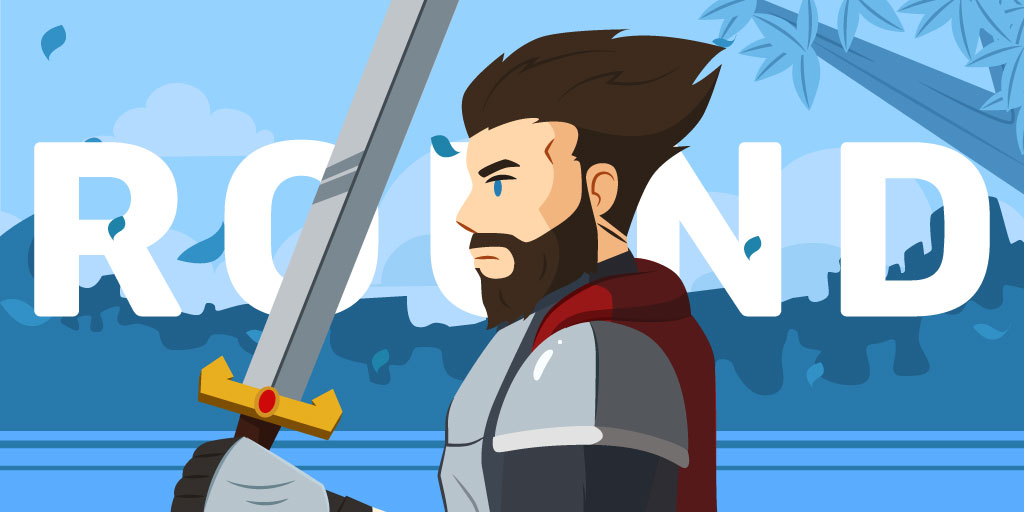
Round characters are well developed. They are complex and display a variety of emotions, motivations, beliefs and personality traits that make sense of their actions and responses to events around them. Sometimes, said emotions or beliefs may even be contradictory, which creates tension within the character. Because they are multi-layered (just like real people), they become more realistic and relatable, and this is why they are interesting and appealing to readers.
Characteristics of Round Characters
To demonstrate the multidimensional and intricate nature of the round character, here are some of the key characteristics that define them:
- Deep identity: They have a depth of personality and exhibit a variety of emotions, motivations, values, and behaviors.
- Important: The plot is often arranged around them, and they hold significant roles in the story if they are not the main character.
- Ambiguous: Because of their depth and complexity, their behavior might be ambiguous and they can be challenging to categorize or understand fully.
- Unique: They differ from other characters, both in this story and all others, and from stereotypes and caricatures.
- Realistic: Readers can identify with these characters’ experiences and struggles (even when they take place in a fictional world) because the way they deal with them and the way they feel about them is normally realistic and believable.
- Authentic: They are normally authentic and genuine without conforming to societal stereotypes.
- Backstories: The histories and backgrounds that shape and explain their behavior are detailed.
- Engaging: Readers can engage with and learn about their personalities and motivations, form emotional connections, and identify with them in some level.
- Internal contradictions: Because they often try to reconcile opposing thoughts, beliefs, and emotions, and wrestle with inner turmoil, they frequently experience internal conflict.
- Strengths and weaknesses: Like real people, they have good and bad personality traits, assets and flaws.
- Unpredictable: Because of their internal contradictions, they can be unpredictable, and can surprise and fascinate readers with their actions and decisions.
- Memorable: Because of both their relatability and unique identity, they are memorable and leave a lasting impression on readers, often becoming some of the most iconic characters in literature.
- Growth: As a result of their experiences, they experience significant personal growth and development throughout the story.
All these characteristics are not always present in round characters, but most of them are. For example, round characters do not always have to be unpredictable or have intricate family backgrounds, but you should always aim to show their flaws and their growth throughout the pages. Great round characters without flaws that remain unchanged by the end of a story are a thing of the past: as any good writer (and any reader!) will tell you, a character without flaws who is not impacted by the events that take place around them is boring to read.
Nevertheless, keep in mind that only the most prominent round characters in your story should possess almost all of these traits to be genuinely engaging, while the less central ones will lack some of them to prevent these characters from becoming too elaborate.
Character Development Quiz (Easy)
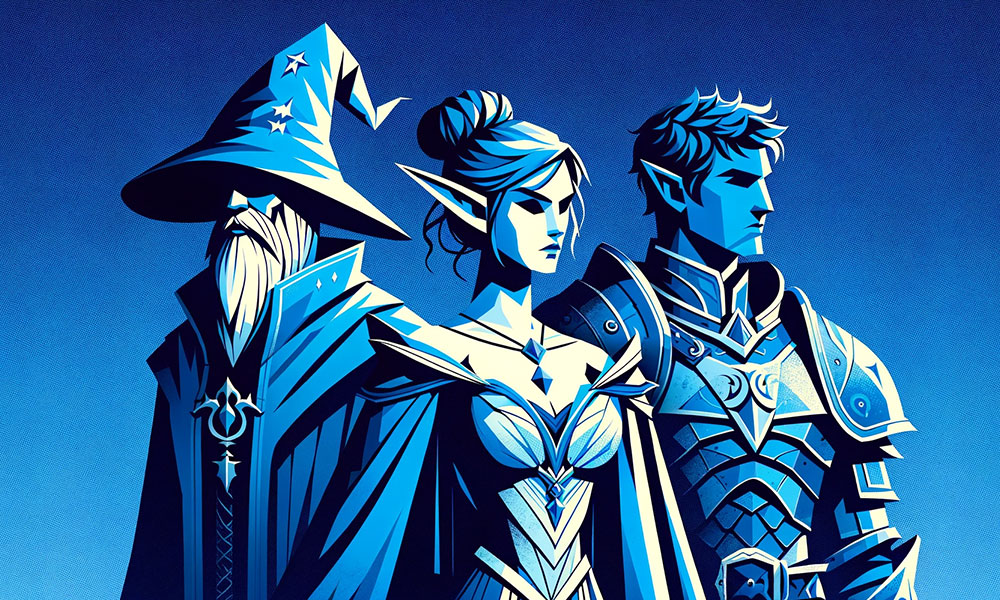
Examples of Round Characters
Literature is replete with much-loved round characters that leave an impression on readers long after they finish reading. Let’s consider three examples:
Romeo (Shakespeare, Romeo and Juliet)
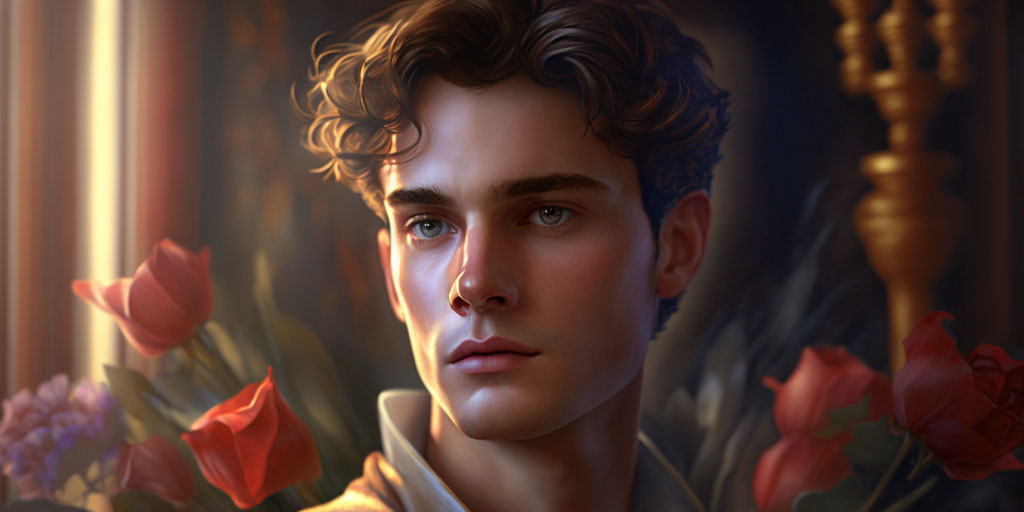
Romeo is the male protagonist in William Shakespeare’s play Romeo and Juliet. He is the son of the Montague family and falls in love with Juliet, who is from the rival Capulet family. Romeo’s character is extremely well developed. His backstory is described in detail in the form of his family, their place in society, and the family feud.
He is passionate and driven by his emotions. Prone to mood swings and a tendency to act on impulse, he sometimes gets himself and those around him in huge trouble. His rage-filled killing of Tybalt, Juliet’s cousin, is one of many actions that illustrate these emotions, flaws, and personality traits.
The love and idealism that make him risk death by pursuing Juliet and the despair that drives him to suicide upon hearing of her apparent death are all signs of his emotional depth and motivational complexity.
His nobility is clearly present throughout the story, but the opposite is equally visible in the form of his romanticism and willingness to act against the will of his family.In addition, he is central to the story and he changes throughout the three days in which the action takes place, developing from a boy infatuated with a normal girl to betraying his family for love and becoming a murderer. As he displays all the signs of a well-designed, rounded character, he is one of the most memorable characters in Universal Literature, even centuries later.
Huckleberry Finn (Mark Twain, The Adventures of Huckleberry Finn)

Huckleberry Finn is the main character and narrator of Mark Twain’s novel The Adventures of Huckleberry Finn. Huck is a young boy from a poor, abusive family who embarks on a series of adventures down the Mississippi River with his friend Jim, a runaway slave.
Throughout the story, Huck struggles with conflicting values and beliefs, particularly with regards to race and slavery. He is torn between his loyalty to Jim and the racist attitudes of the society in which he lives. These conflicts create one of the most complex characters ever written.
He believes that the racist laws of society are just acts completely against them according to his conscience, and then condemns himself as a traitor and villain who will go to hell. This sets him up as a strong hero.
Simultaneously, however, he uses deceit, fraud, lies, and theft to overcome the terrible challenges of his life, which aren’t the characteristics one normally finds in a hero. His tendency to show compassion, his ability to be inventive, and his strong realism about society and his place in it all create a well-developed, rounded character. As such, all the characteristics we expect in a rounded character are present in Huck Finn.
Katniss Everdeen (Suzanne Collins, The Hunger Games)

The 16-year-old protagonist of The Hunger Games is the main provider in her family. By volunteering to take her younger sister’s place in the Games, she displays maturity and strong protective qualities. She is also resourceful, tough, and practical, evidenced by her decision to hunt and sell surplus food on the black market in defiance of the law.
Her treatment of Rue demonstrates that she holds onto her compassionate character, notwithstanding all the killing during the Games, and the story follows her tentative romantic interests that show her to be an independent and caring girl. Accordingly, her character is fully fleshed out, from her backstory of poverty, to her present strength and integrity.
How to Write Round Characters
Since round characters need to be life-like, realistic, relatable, and relatively consistent, they are surprisingly difficult to create. In fact, by the end of your story, you will know your round characters better than you know anybody in your real life, because you have to create details about internal motivations and emotions that people tend to conceal. Try some of the strategies in this section to create your round characters:
Give Them Backstories
This should include their upbringing, family history, and previous experiences. Since these are the factors in characters’ lives that shape their personalities and explain their behaviors and choices, it should be pretty detailed.
Start as basic as possible with their name, age, place of birth, and family background. Then move up one level of complexity, where you create their childhoods and the experiences that shaped them, such as their relationships with family, friends, teachers, and environment. Now, expand the picture to their surroundings. Describe the social norms, culture, and historical events during their lifetimes.
For each background detail you create, jot down some ideas of how it could have produced their personalities and goals. Most of the biography you create here will not appear in your story in an explicit form, but it can help you to create your characters’ responses to events and relationships with others.
Develop Their Personalities
Based on the details you just created, compile personalities that could logically have emerged from these backgrounds. These should include their abilities, emotions, beliefs, and goals. To help you think of personality, use the Big Five Personality Traits as set out by psychological research.
What drives your character? Are they motivated by power, love, money, or something else? How do they react to different situations? What do they value most in life? What are their strengths? What are their weaknesses?
Once you have mapped out their personalities, you can have a good idea of how they will act and react throughout your story.
Incorporate Conflict
A character with a perfect life is flat and difficult for readers to relate to, as it is far removed from their personal experiences. Hence, build conflict into your round characters’ lives. Some conflicts are internal, such as self-doubt, fear, guilt, temptation, conflicting desires, identity crises, and dilemmas like deciding between taking the action that is right or popular.
External conflicts are those in which the character faces obstacles or challenges from the outside world, such as war, crime, oppression, interpersonal rivalry, a lawsuit, unemployment, wealth, or living in a remote location.
Whatever the conflicts that you decide on, they must reveal your round characters’ unique reactions, emotions, beliefs, goals, and personalities. Refining your round characters is one of the greatest purposes of a conflict.
Use Dialogue
Use dialogue to reveal your character’s personality, beliefs, and motivations. How they talk to other characters and what they say can reveal a lot about who they are. Do they use humor, slang, sarcasm, playfulness, irony, or wit? Are they well-read, cultured, boorish, rude, or polite?
Use Internal Monologue
Use internal monologue to reveal your character’s thoughts and emotions. This can help to give insight into their motivations and show their internal conflict. What do they think and how do they feel in response to situations? What do they notice, see, hear, smell, taste, and touch? How do they reflect on themselves and their own choices?
This is a good way to make a villain’s disgusting or cruel behavior intelligible to your readers. Their reflections will also show how they grow as they overcome obstacles and confront their fears.
Avoid Stereotypes
Flat characters are caricatures, round ones aren’t. Accordingly, avoid writing your character as a stereotype or caricature. Give them unique and individual characteristics that make them stand out.
For example, disabled people aren’t necessarily helpless and people who overcome challenges aren’t always inspirational. While it is fine for them to sometimes be helpless and sometimes be inspirational, you should build rich personalities for them that broaden their range of reactions and emotions. Otherwise, they’re flat characters.
Create a Balance
Create a balance between strengths and weaknesses in your character. They should have positive and negative qualities that make them realistic and relatable.
Everyone has flaws and not only does that not prevent us from liking them, but, if we are honest, most of us would hate someone who is perfect and flawless all the time. So long as readers understand what the flaws are and where they come from, they can identify with your character.
But do not fall in the trap of creating round characters that are completely good or bad. If you do, they’ll become caricatured, unrealistic, and therefore unrelatable. Only flat characters are completely virtuous or evil.
What Is a Flat Character?
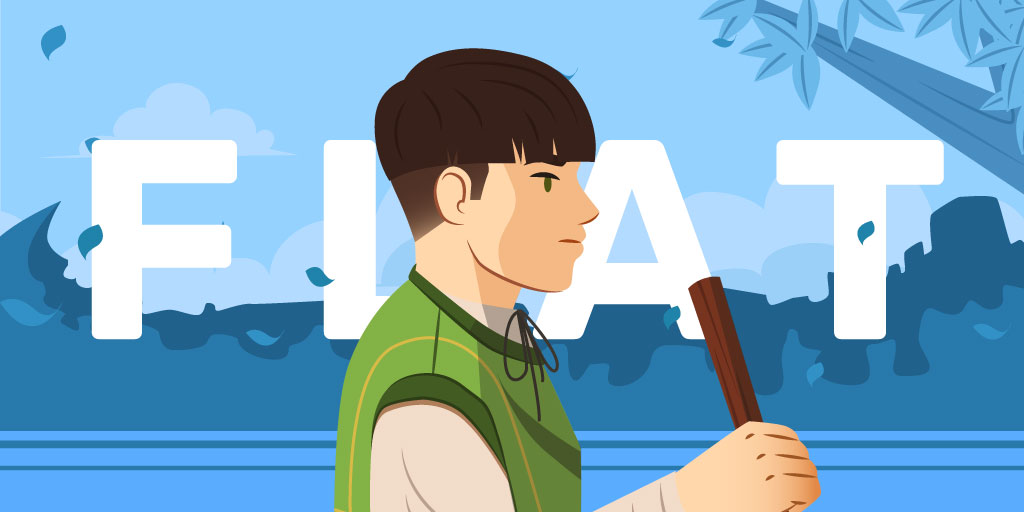
A flat character is relatively one-dimensional and lacks depth or complexity. They are often used as supporting characters or minor figures in a story, and are typically defined by a few simple traits or characteristics. They are normally used to provide context or support for the round characters.
They can be utilized to provide a contrast to the round characters, thereby highlighting their strengths, weaknesses and other characteristics. They can also serve as plot devices, providing necessary information or advancing the story in some way without distracting from the main action.
Characteristics of Flat Characters
To demonstrate the shallow and simple nature of the flat character, here are some of the key characteristics that define them:
- One-dimensional: They lack depth, layers, or dimensionality and do not exhibit multiple facets of personality or behavior.
- Supporting role: Their job is usually to support the round characters, providing context and contrast for them.
- Unambiguous: It is easy to understand them, as they lack nuance or subtlety, and may be defined by broad strokes or simple, widely recognized characteristics.
- Stereotypical: Because they often conform to familiar stereotypes, they lack individuality or uniqueness.
- Unrealistic: Readers tend not to form a deep emotional connection with them, as they are too simple and caricatured, and thereby, too unrealistic.
- Lack of backstory: Since they usually exist primarily to serve the plot or the actions of the round characters, they lack a detailed backstory or personal history.
- Indifferent: They are too simple and their role too narrow to allow the reader to form a strong emotional connection with them.
- No internal contradictions: They don’t seem to experience internal conflict or struggle with competing desires or motivations.
- Shallow strengths and weaknesses: While they may have strengths and weaknesses, these are shallow and glanced over.
- Predictable: Their behavior and actions are predictable (usually because they conform to well-known stereotypes) and don’t surprise the reader.
- Forgettable: Readers aren’t left with a lasting impression of them once they’re done reading.
- Limited growth or change: In most cases, they don’t experience significant growth or change throughout the course of the story, and remain static or unchanged.
It is important to note that few characters are genuinely completely flat. The nameless shopkeeper that greets your main protagonist with one word every morning might qualify, but the moment you develop them further, they start to grow and gain some depth.
Therefore, it is better to think of flat and round, not as distinct categories of character, but instead as a continuum with characters that fall on various points from flat to round.
Examples of Flat Characters
Because flat characters are by definition not particularly memorable, we tend to remember them because of their relationship with other characters. Here are some examples:
Lady Capulet (William Shakespeare, Romeo and Juliet)
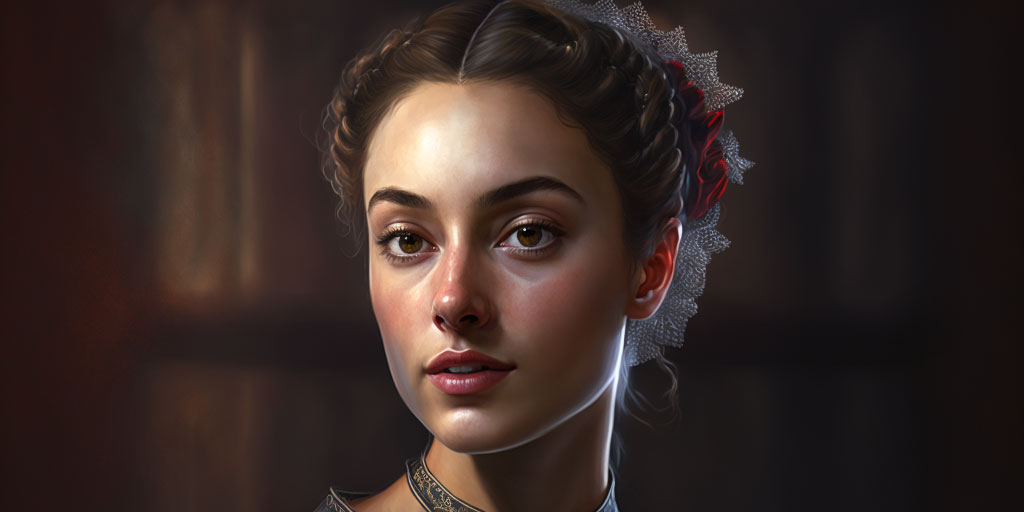
Lady Capulet is the wife of Lord Capulet and the mother of Juliet. We know that she is emotionally distant from her daughter, happy to leave her parenting duties to the nurse, deferential to her husband, and concerned with social status and family honor.
There is nothing beyond those simple characteristics, all of which can be described in two or three lines. But she does serve a supporting role in the story, as flat characters should do.
She makes Juliet deeply miserable by proposing a marriage to someone whom she does not love, and her emotional distance from her daughter and dutifulness to her husband contribute significantly to the tragedy that follows. Her obedience to her husband and reliance on a nurse also make her a typical wealthy 16th century Italian woman without much that distinguishes her from the stereotype.
Janice Edgecombe (Stephen King, The Green Mile)

Janice Edgecombe is even flatter than Lady Capulet. She is the wife of Paul Edgecombe, the narrator and main protagonist of The Green Mile.
We know that she is loving and compassionate, since she supports her husband through the trauma of his job and warden Moores’s wife through her illness. She is also adventurous and an independent thinker, as evidenced by her acceptance of her husband’s schemes.
But other than that, she is close to invisible and the story could easily have existed without her.
How to Write Flat Characters
Creating a flat character is more about creating a role than about creating a character, since they appear in stories primarily because of the role they play in the plot. Consider the methods below to create your flat characters.
Define Their Role
Decide what specific role the flat character is meant to play in the story, and what purpose they are meant to serve. Once you have done this, you can write a character that is suitable for that role or purpose.
For example, if you need some comic relief in dark or serious plots, think of Robin in Batman comics and Happy Hogan in the Iron Man movies. Don’t overcomplicate them or give them too much depth or nuance. Keep them simple and straightforward, with a clear function and purpose within the story.
Use Stereotypes
Use stereotypes to create a character that is easily recognizable and fits into a familiar mold. This can help to establish the character’s role quickly and efficiently without much effort on the part of the reader or writer.
For example, in The Crucible, by Arthur Miller, the townspeople are a bunch of over-emotional, superstitious gossips prone to mob mentality that have no characteristics beyond this role.
Use Them for Contrast
Use flat characters to provide a contrast with some group or some round character. This can help to highlight the unique qualities of the round characters or characteristics of a group.
For example, the store clerk in The Great Gatsby is used to illustrate the class differences between the wealthy and poorer characters. He is a representative of the less fortunate classes without being or doing much else.
Use Them to Advance the Plot
If you want to advance the plot and you don’t know how, flat character is often the answer.
For example, the shark in Jaws, by Peter Benchley, is the primary antagonist in the story. Its presence in the plot creates horror and suspense, and drives the action of the story forward.
It is important to use flat characters sparingly. Readers can easily be overwhelmed or confused by too many characters that appear in a story that aren’t developed.
Round Characters vs. Flat Characters

In short, the main difference between a round and a flat character is that the former is deep and complex, while the latter is shallow and uncomplicated.
Regarding similarities, both round and flat characters should be consistent without big, unexplained changes in behavior or reactions. They should both contribute to the plot. Both should be well defined and both can have an impact on other characters.
Here is a comparison of round and flat characters in an easily digestible form:
| Round Characters | Flat Characters |
|---|---|
| Deep | Shallow |
| Multidimensional | One-dimensional |
| Central role | Supporting role |
| Ambiguous | Unambiguous |
| Unique | Stereotypical |
| Realistic | Unrealistic |
| Rich backstories | Lack backstories |
| Engaging | Indifferent |
| Internal contradictions | No internal contradictions |
| Deep strengths & weaknesses | Shallow strengths and weaknesses |
| Unpredictable | Predictable |
| Memorable | Forgettable |
| Growth | Limited growth |
Frequently Asked Questions
Here are the answers to some common questions on different types of characters and how they relate to round and flat characters.
What Are the Different Types of Characters?
There are basically four types of characters: round, flat, dynamic, and static. The first two descriptions refer to the extent to which the character is developed, while the latter two refer to the extent to which the character changes through the story.
What is the Difference Between Static and Dynamic Characters?
Static characters do not change over the course of the story, while dynamic characters undergo a significant transformation or change in response to the events that occur. These changes, or lack thereof, can refer to the characters’ beliefs, emotions, personalities, or values.
Can a Round Character be a Static Character?
In theory, it is possible for a character to be both round and static. This means that the character is complex and multidimensional, but does not undergo a significant transformation or change over the course of the story.For example, Sherlock Holmes is a complex and multidimensional character, but he does not transform through the series and remains his analytical and intelligent self.
Can a Flat Character Be Dynamic?
Flat characters can be dynamic, meaning that they lack depth and complexity, but display a significant change through the story.For example, Eeyore in the Winnie-the-Pooh series is a relatively flat character, the stereotype of an outsider. He is pretty pessimistic and depressed, but then transforms to having more confidence in the story “Eeyore’s Tail Tale.” He is a bit better developed in that particular story, but he is still fairly flat.
Are All Flat Characters Static?
All flat characters are not necessarily static. However, the flattest ones on the round-flat continuum probably should be relatively static to avoid making sudden, unexplained changes to characters.
Can a Main Character Be Flat?
While it might theoretically be possible for main characters to be flat, it is a bad idea to create one. It is unlikely to keep the reader’s attention for anything longer than a short story, and even then, it is likely to be uninteresting and unexciting. But some brilliant authors have managed it.
In the story of Dracula, for example, Count Dracula is a main character that is pretty flat. He wants to suck blood and convert others to vampires. Other than that, there isn’t much depth or background information.
What is the Purpose of Flat Characters?
Flat characters can move the plot forward, provide a contrast with the round characters, symbolize certain themes or ideas (like poverty or wealth), or create conflict.
Can a Flat Character Become a Round Character?
A flat character can become a round character during the course of a story, but that character is then overall round, not flat. An author can develop a character from initially being stereotypical to eventually becoming complex, usually through conflicts and experiences that transform their beliefs and values.
It is also possible to start with a stereotypical character and gradually reveal hidden depths and motivations as the story progresses, but that might frustrate many readers who want their characters to act more or less consistently.
Final Thoughts
Both round and flat characters play important roles in fiction and should be included in stories to captivate your readers and enhance your plot. Because of the depth of round characters, they keep your readers emotionally engaged, while flat characters help to drive the plot and support the main characters.
Character Development Quiz (Hard)








